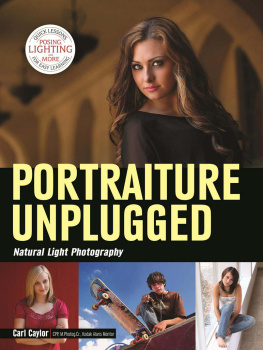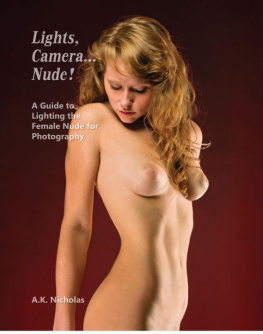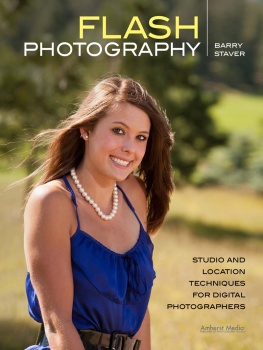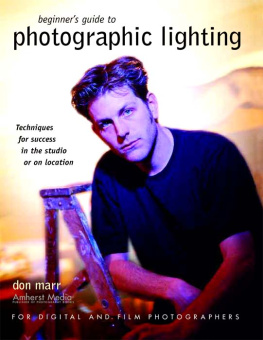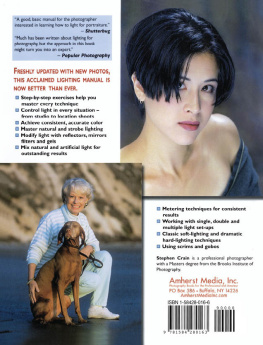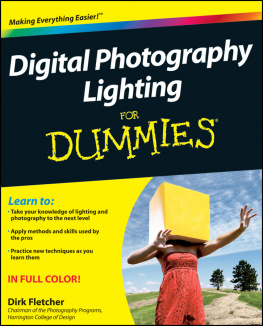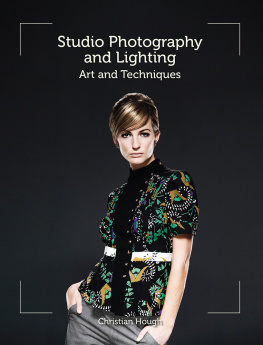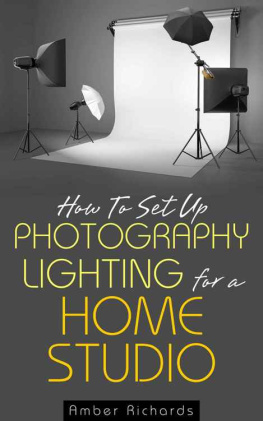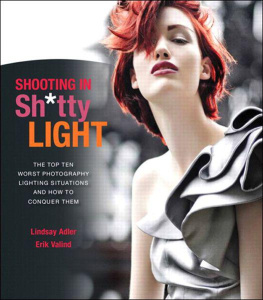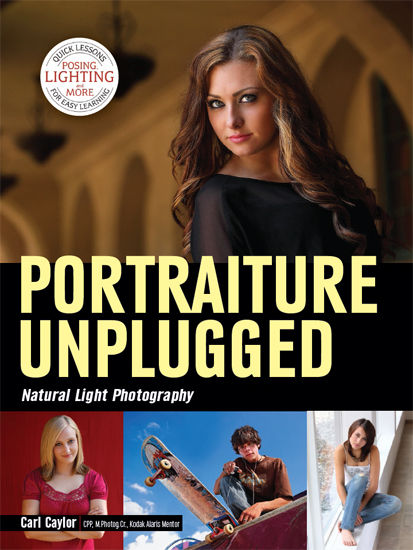ACKNOWLEDGMENTS
Thanks to my wife, Theresa, for the title idea for this book. Also, thanks to her and my wonderful children Wyatt and Valerie for giving up time with me so I could work on this project. I love you all more than you know.
I did not get to where I am today without help. There are many fine photographic artists who helped groom me. I especially want to acknowledge a few: Scott Dupras, Darton Drake, Mille Totushek, Donna Swiecichowski, Teri Shevy, Dan Stoller, Fuzzy Duenkel, Randy Peterson, and Jon Allyn. A special thanks to my two photo buddies Dan Frievalt and Michael Mowbray for keeping me company and sane via Facebook while working on this project. We all see things very differently, but in the end, good portraiture is good portraiture.
SPONSORS
Thanks to my sponsors: White House Custom Color (WHCC, www.whcc.com), Kodak Alaris (www.kodak.com), Sweetlight Systems (www.sweetlightsystems.com), and G.W. Moulding (www.gwmoulding.com). Without these folks, live photographic education couldnt exist.
Copyright 2015 by Carl Caylor.
All rights reserved.
All photographs by the author unless otherwise noted.
Published by:
Amherst Media, Inc.
P.O. Box 586
Buffalo, N.Y. 14226
Fax: 716-874-4508
www.AmherstMedia.com
Publisher: Craig Alesse
Senior Editor/Production Manager: Michelle Perkins
Editors: Barbara A. Lynch-Johnt, Harvey Goldstein, Beth Alesse
Associate Publisher: Kate Neaverth
Editorial Assistance from: Carey A. Miller, Sally Jarzab, John S. Loder
Business Manager: Adam Richards
Warehouse and Fulfillment Manager: Roger Singo
ISBN-13: 978-1-60895-886-3
Library of Congress Control Number: 2014955672
10 9 8 7 6 5 4 3 2 1
No part of this publication may be reproduced, stored, or transmitted in any form or by any means, electronic, mechanical, photocopied, recorded or otherwise, without prior written consent from the publisher.
Notice of Disclaimer: The information contained in this book is based on the authors experience and opinions. The author and publisher will not be held liable for the use or misuse of the information in this book.

www.facebook.com/AmherstMediaInc
www.youtube.com/c/AmherstMedia
www.twitter.com/AmherstMedia
CONTENTS
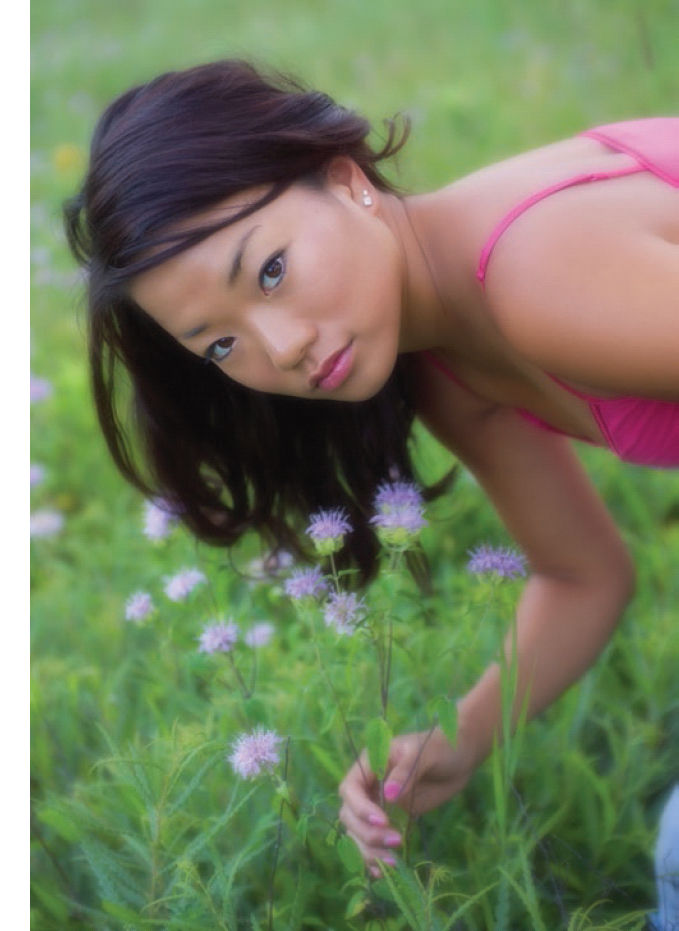
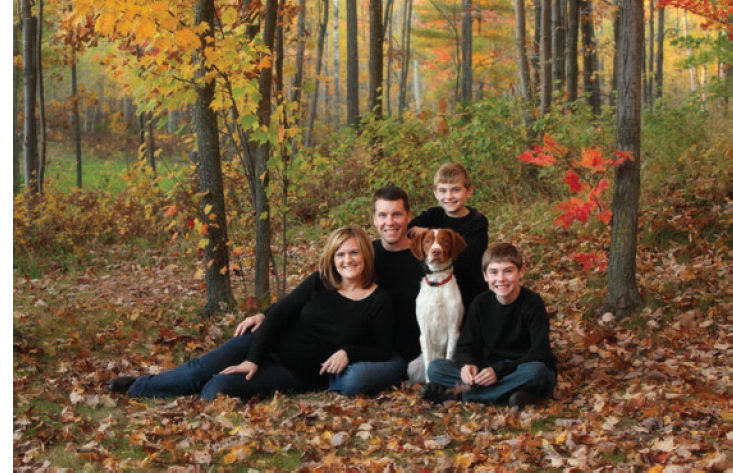
Carl is a Kodak Alaris mentor and has been involved with photography for over twenty-five years. He started his photographic career in the darkroom as a custom printer and technician. He is PPA Certified, a Master Photographer, a Craftsman with Professional Photographers of America, and an international photographic judge. He has won numerous national awards for his photography, including twenty-four PPA Loan Collection images and several Kodak Gallery and Fuji Masterpiece Awards. He has been the Wisconsin State Photographer of the Year three times and has received a multitude of state awards. In 2014, the Wisconsin Professional Photographers awarded Carl the prestigious National Award for his contributions to the field of photography. You can see more of his work on his website: www.photoimagesbycarl.net.
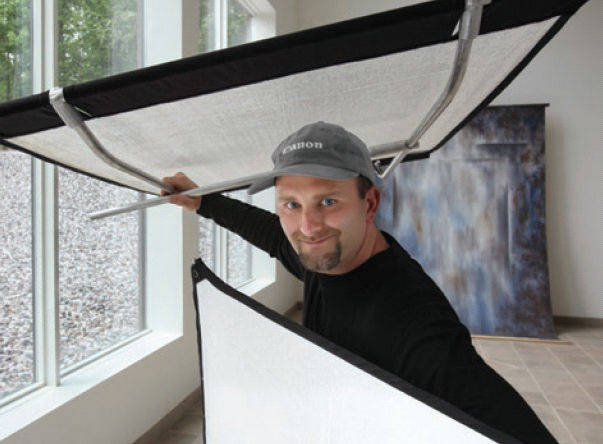
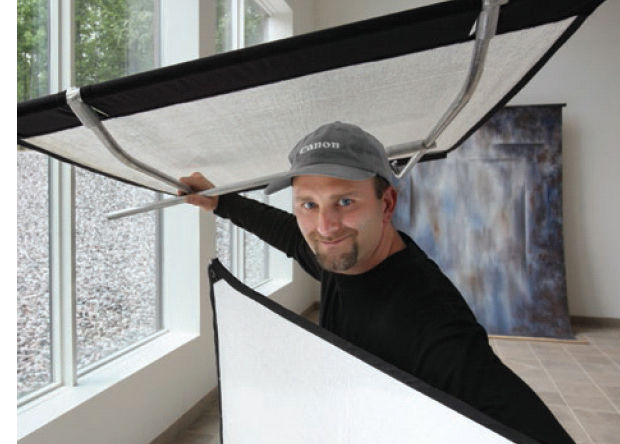
As much as he loves creating portraits, he also has a passion for helping others become better portrait artists. Carl is one of the most sought- after instructors in the country and abroad due to his hands-on coaching approach. Dont plan on just watching in his class! Carl will challenge you to become a better photographer than you already are. His photographic skills are just part of what will help each student. His greatest strength is his ability to see what skills others already possess and then find ways to help enhance those skills so that photographers can take their work to a new level.
T his is a book of information, not fluff. When you read through the pages and study the images, you will learn to find and use natural light for your portrait needs. Embrace the ideas. They have worked for many years and will continue to work through the end of time, as natural light portraiture has been around since the beginning of photography.
Our industry has changed rapidly as of late. With all the new lighting equipment on the market, why use natural light? There are several reasons: (1) Biology. The eyes of the subject are more colorful and powerful. (2) Education. The light is constant and can be seen before the image is captured. (3) Cost. Natural light is free. How about that? (4) Subject psychology. The subject doesnt have disturbing flashes going off every time an image is created. (5) Viewer psychology. The scene the viewer sees in an image is natural. Ill elaborate.
First, lets look at the biology. Our eyes are like a lens on a camera. The pupil will expand and contract to let in a comfortable volume of light in a given area. In most cases, we work in open shade, which offers ample light for the human eye. The pupil will contract to a small aperture and more of the iris will be visible. The iris, of course, is the colorful part of our eyes. More color means more power. In a dark area, such as a dimly lit studio, the pupil becomes large and covers the iris. If a strobe illuminates the subject at this time, the eye is captured with a large pupil and a lack of color and power.
We see catchlights in the eyes of our subjects when viewing an image. If the light source was handled inappropriately or there are several catchlights from different sources, it will be bothersome to the viewer. For you studio strobe folksif you need to work with strobes and still want power in the eyes, turn on the overhead lights and get a stronger modeling lamp in your strobes. The bottom line is that the constant light needs to be bright enough for the pupil to contract. Its Biology 101.
Our eyes are like a lens on a camera. The pupil will expand and contract to let in a comfortable volume of light in a given area.
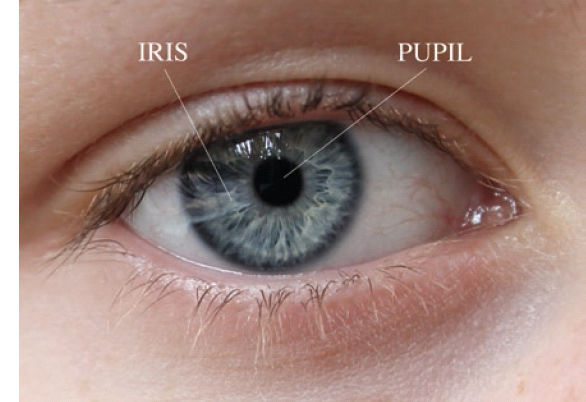
This is a close-up of an eye in a natural light area. Notice all the beautiful color in the iris.
What about education? When learning the art of placing light on a subject, I feel it is easier with natural light. The light patterns used to sculpt a human face can be seen the entire time before and during an exposure. There should be no surprises. Once you see the shape, form, and texture of your subject, just record it. Well get back to this topic later.
Natural light is cost-effective; its free. No batteries, no wire connections that fail, no cords, no triggering devices, transmitters, receivers... you get the point. There are times when we use reflectors or panels to help modify the light, but again, there are no batteries required.

